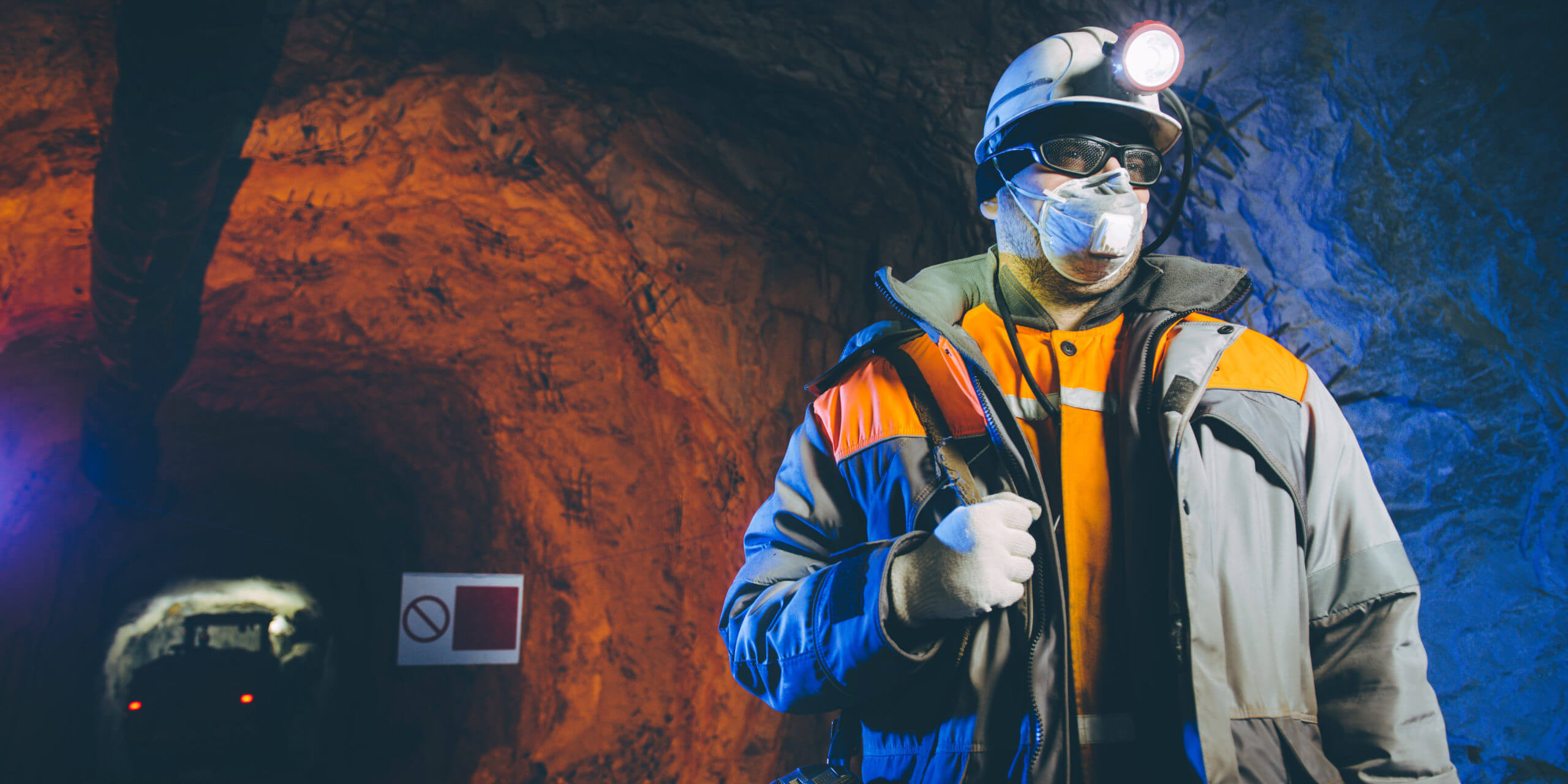The United States and the worldwide economy has been significantly disrupted in the past couple of months by the coronavirus (COVID-19) pandemic. The mining industry has not been immune by the new business conditions. The impacts of COVID 19 on mining companies include:
- Shut in of mines
- Lack of international sales market
- Working inventories down
- Reevaluation of noncore operations and underperforming operations
- Public companies withdrawing 2020 financial guidance
- Changes in operations to comply with social distancing while still meeting safety standards
- Applying for payroll protection loans (note the U.S Small Business Association (SBA) deems coal mining companies as small business with < =1,250 employees (surface) and <= 1,500 (underground)- see attached for SBA mining table
The US Department of Homeland Security’s Cybersecurity and Infrastructure Security Agency (CISA) has listed mineworkers as essential critical infrastructure workers and deemed miners vital to the national effort against the COVID-19 coronavirus pandemic. The National Mining Association (NMA) applauded the inclusion of mineworkers in the list. NMA CEO and President Rich Nolan said: “Mining underpins every aspect of our economy, providing the metals, minerals and coal that are essential to nearly every sector identified as critical infrastructure under DHS’ CISA National Infrastructure Protection Plan. It was gratifying to see DHS reiterate the importance of our industry during this crisis.”
At this point in the U.S. mining is deemed essential but some parties would like to shut mining down due to the virus spread concern. Fortune magazine did a recent article that highlighted the impact of COVID-19 on miners. The article noted that “America’s 51,000 coal miners are exceptional conduits for the COVID-19 virus” due to the close operating quarters.
In the face of such disruption, maintaining cash flow is of the highest importance. Management should take advantage of the slowdown in operations to take a closer look at each mine.
There are four main areas your company should focus on:
1. Cash Flow Projections
Cash flow forecasts and projections will help management make key decisions during this period of uncertainty. Cash flow projections by mine can be a critical part of identifying where cutbacks can be made and where production can be elevated at higher productivity mines.
2. Maintaining Normal Cash Flow Process
The following processes that were previously best practices are now essential to maintaining a healthy company:
- Accounts receivable – make sure that bills are paid timely by customers. If necessary, assign a person to identify accounts receivable balances that need attention or follow up to make sure people responsible for collection are held accountable. If problems arise on billings, make sure you are proactive in protecting your rights by notifying customers of the delinquent amounts and, if necessary, filing liens.
- Accounts payable – through the use of the cash flow forecast, vendor balances can be prioritized and paid when funds are available. Keeping cash in the bank to get the Company through this disruption is likely to be more important in the short term than a vendor’s early payment discount. Also, check to see if vendors will allow extended terms.
- Evaluate key vendors and the opportunity to look for cost savings in ongoing services. Given the uncertain time for all vendors, vendors may be more accepting of cost reductions.
- Payroll – consider what payroll payments are a priority and what payments could be cut back or deferred. For example, payroll taxes should continue to be paid timely to prevent fines and penalties. However, items such as employer 401(k) contributions, bonuses, and elements of owner compensation/distributions could potentially be deferred or reduced. If necessary, consider head count and whether layoffs and/or furloughs may be necessary (the cash flow forecast and analysis of the government programs below will be essential to making such tough decisions).
3. Banking and financing
Proactively work with your bank to make sure you have the financing you need to get through the periods when cash flow will be at its worst. Also, if you have debt with the bank, discuss how payments could be restructured to defer payments or potentially make payments of interest only.
4. Government Programs
The Federal and State governments have been fast tracking legislation to help businesses and individuals. In many states, for example, access to unemployment benefits have been expanded. At the Federal level, on March 18, 2020, the Families First Coronavirus Response Act (Families First Act) was signed into law and on March 27, 2020, the Coronavirus Aid, Relief, and Economic Security (CARES) Act followed.
- Provides a new type of covered public health emergency leave for eligible employees of employers with fewer than 500 employees.
- Requires employers with fewer than 500 employees to provide up to two weeks of paid sick leave to all employees for certain covered purposes related to the coronavirus outbreak.
- Establishes refundable payroll tax credits to cover the cost of wages paid to employees under the public health emergency leave and emergency paid sick leave programs.
- The Paycheck Protection Program (PPP), which is an emergency loan program based on the Small Business Administration’s (SBA) long standing 7(a) loan process. The program enables entities with 500 or fewer employees to borrow funds through an SBA lender to pay staff, mortgage interest, rent and utilities for an 8-week period with the possibility of the loans being forgiven in whole or in part. Businesses in certain industries can have more than 500 employees and still qualify for PPP loans if they meet applicable SBA employee-based size standards for those industries (see attachment).
- A Mid-Size Loan Program for entities with between 500 and 10,000 employees. More details are expected to be forth-coming on this program.
- Refundable payroll tax credits available to some employers whose operations have been fully or partially suspended due government COVID-19 shutdowns or that have had a significant decline in gross receipts when compared to the same calendar quarter in the prior year. The credits are equal to 50% of an employee’s qualified wages up to $10,000 for all quarters (resulting in a maximum credit of $5,000 per employee).
- The ability for employers to defer payment of the employer share of Social Security taxes payable for all periods through 12/31/2020. These deferrals must be paid in 2 installments: 50% by 12/31/2021 and 50% by 12/31/2022.
The Dean Dorton Energy Team stands ready to help you navigate through these uncertain times. The following services can help protect your organization:
- Evaluation of your remote IT connections as staff work from home
- Review of cash flow forecasts
- Interim accounting support to close gaps
- Evaluation of vendor contracts and opportunities for cost savings
- Evaluation of tax savings opportunities
- Evaluation of government stimulus programs
Dean Dorton Energy will be here during and after COVID-19 to help you meet your goals and move your organization forward. We feel for the industry and the challenges presented by COVID-19 as noted by David Stetson, CEO of Contura Energy, Inc.,
“As the world attempts to understand and respond to the impacts of the current pandemic, we are implementing plans that we believe will help us manage through the challenges of a distressed coal market and growing coal stockpiles alongside varied customer responses to the coronavirus.” “In this and every situation we face, our employees are of utmost concern, and we are implementing tailored measures across the company to help reduce the impact and exposure to our workforce wherever possible. Though most sites will idle for roughly four weeks, we will continually analyze needs across the organization and demand from our customer base, and we may extend or shorten these idle periods based on that analysis. We remain committed to our customers and expect to continue meeting our sales agreements.”
| NAICS codes | NAICS U.S. industry title | Size standards in millions of dollars | Size standards in number of employees |
|---|---|---|---|
| 211120 | Crude Petroleum Extraction | 1,250 | |
| 211130 | Natural Gas Extraction | 1,250 | |
| 212111 | Bituminous Coal and Lignite Surface Mining | 1,250 | |
| 212112 | Bituminous Coal Underground Mining | 1,500 | |
| 212113 | Anthracite Mining | 250 | |
| 212210 | Iron Ore Mining | 750 | |
| 212221 | Gold Ore Mining | 1,500 | |
| 212222 | Silver Ore Mining | 250 | |
| 212230 | Copper, Nickel, Lead, and Zinc Mining | 750 | |
| 212291 | Uranium-Radium-Vanadium Ore Mining | 250 | |
| 212299 | All Other Metal Ore Mining | 750 | |
| 212311 | Dimension Stone Mining and Quarrying | 500 | |
| 212312 | Crushed and Broken Limestone Mining and Quarrying | 750 | |
| 212313 | Crushed and Broken Granite Mining and Quarrying | 750 | |
| 212319 | Other Crushed and Broken Stone Mining and Quarrying | 500 | |
| 212321 | Construction Sand and Gravel Mining | 500 | |
| 212322 | Industrial Sand Mining | 500 | |
| 212324 | Kaolin and Ball Clay Mining | 750 | |
| 212325 | Clay and Ceramic and Refractory Minerals Mining | 500 | |
| 212391 | Potash, Soda, and Borate Mineral Mining | 750 | |
| 212392 | Phosphate Rock Mining | 1,000 | |
| 212393 | Other Chemical and Fertilizer Mineral Mining | 500 | |
| 212399 | All Other Nonmetallic Mineral Mining | 500 | |
| 213111 | Drilling Oil and Gas Wells | 1,000 | |
| 213112 | Support Activities for Oil and Gas Operations | $41.5 | |
| 213113 | Support Activities for Coal Mining | $22.0 | |
| 213114 | Support Activities for Metal Mining | $22.0 | |
| 213115 | Support Activities for Nonmetallic Minerals (except Fuels) | $8.0 |
For more information on how the Coronavirus is impacting businesses across multiple industries, visit our COVID-19 resource page:








